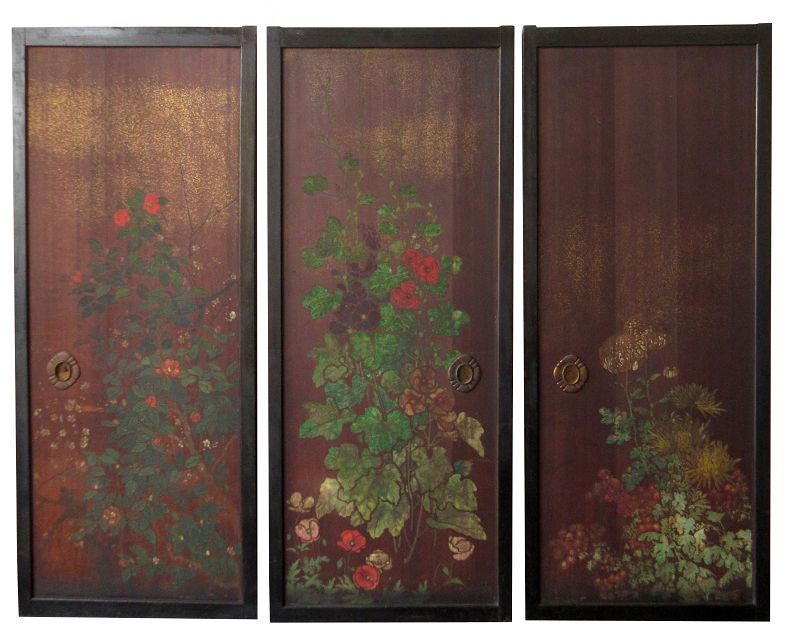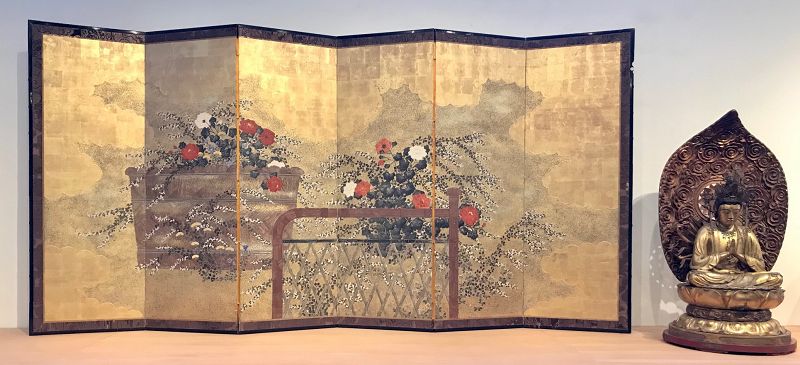Japanese 3 Fusuma Sliding Doors
$10,000.00
Historically, fusuma were often painted with scenes from nature such as mountains, forests, or animals. The traditional scale of the door is 5'7". The Hinoki wood panels are painted with Rimpa paint and flecks of gold, creating a mist. The floral composition is with camellia, cherry blossom, hollyhock, and chrysanthemums.
The camellia flowers symbolize young sons and daughter. Tsubaki (camellia) symbolizes the divine, faithfulness and longevity. The next flower is the cherry blossom, or Sakura. The samurai of feudal Japan lived by strict moral codes of honor not only in life, but in death as well. It was their duty to simultaneously realize the the inevitably of death and release any fear of it. Their lives, marked by battle and conflict, were often cut short, and so the fallen cherry blossom became the symbols of their short life. The hollyhock is a symbol of fertility, fruitfulness, and ambition. The chrysanthemum or Kiku in Japan is a symbol that represents longevity and rejuvenation. When first introduced to Japan during the Nara period (710-793 AC). The Japanese Royal family was fascinated by the chrysanthemum. As the years passed, the chrysanthemum became the Imperial Family Emblem with 16 petals.
Exhibition at the 2018 Tribal Art & Textile Show
Edo Period Early 19th Century
Dimensions: 28 1/4" x 68 1/2"
https://zentnercollection.com/product/japanese-3-fusuma-sliding-doors/


